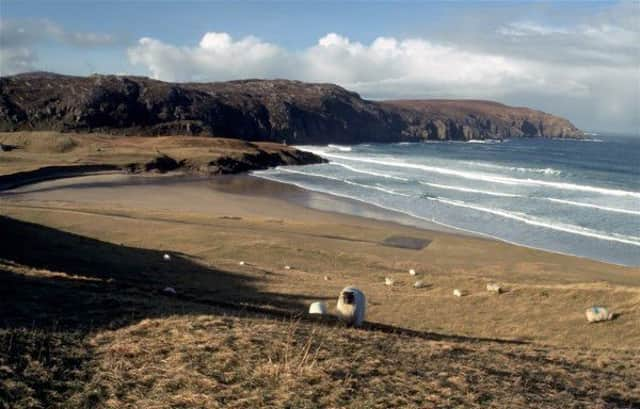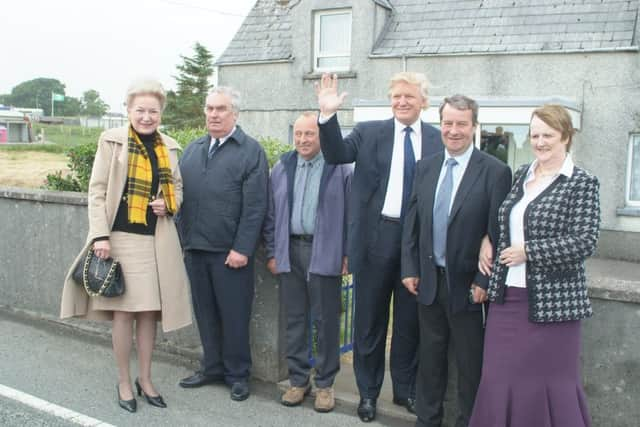The Scottish clan roots of Donald Trump


However, Donald Trump’s ascension to the American presidency appears to have come with little attention paid - by him at least - to his ancestry on the Isle of Lewis.
Trump’s business links with Scotland have been well-documented, from the controversial construction of his Aberdeenshire golf course to his love/hate relationship with former First Minister Alex Salmond, arguably nowhere other than the United States has felt his presence more than Scotland.
Advertisement
Hide AdAdvertisement
Hide AdYet, his visits to his ancestral homeland have been brief and fleeting at best.


His mother, Mary MacLeod, was born in the tiny Lewis village of Tong in 1912, before departing the island for the United States on the RMS Transylvania in 1930.
But Trump has visited the island just twice in his lifetime. On his last brief sojourn in 2008, he spent a reported 97 seconds inside the family home, an unassuming, pebble dashed former croft where Mary was born and raised alongside nine older siblings, a world away from the gaudy, gold-encrusted affluence of Trump Tower.
“I like it, I feel very comfortable here; I think I do feel Scottish,” he announced to waiting reporters after leaving the house, before boarding his private Boeing 727 and waving goodbye to the isle three hours later, seemingly never to return.


Clan MacLeod
Had he stayed longer however, and delved into his family history, he would have discovered the brief and tempestuous history of the Macleod’s of Lewis.
The MacLeod name has its roots in old Norse - the Isle of Lewis remained part of Norway until the 13th century - and is thought to have come from the word “Ljótr,” meaning “ugly.”
By the beginning of the 14th century, the MacLeod clan had split into two branches, those who lived on Lewis - and later grew to hold lands in Raasay - and the MacLeod’s of Dunvegan and Harris.
Advertisement
Hide AdAdvertisement
Hide AdThe MacLeods of Lewis were first granted lands on the mainland in Assynt under the reign of King David II in the mid-14th century, adding to land held in Raasay, Skye and Gairloch and rivalling that held by the MacLeods of Harris.
However their attempts to seize further property on the mainland proved unsuccessful. After an attack on Clan Mackay lands at Strathnaver, the raiding party was ambushed and almost wiped out on the North bank of the River Oykel in what became known as the “battle of Tuiteam Tarbhach,” or “plentiful slaughter,” to give its English name.
Despite its continued strong presence in the north-west of the country, a series of conflicts between branches and families of the clan destroyed the original line of chiefs during the 15th century.
The marriage of clan chief Ruairi to the daughter of John Mackenzie in the mid-1500s produced an heir, Torquill Connanch, only for the child to then be disowned by Ruairi in 1541 due to a supposed affair between the Morrison chief of Lewis.
A succession of feuds based around ascension to the chief of the clan lasting until the end of the century eventually resulted in the Mackenzie’s being awarded the title deeds to the ancestral homeland of Lewis in 1597.
And despite a brief resurgence during the 18th-century Jacobite risings - where they fought against the British Government - the clan succumbed to the infighting which consumed it over a century earlier.
“By the time the Macleod’s of Dunvegan and Harris fought for the government side during the Jacobite risings, the Mackenzie’s owned Lewis and the Macleod’s there fought alongside them,” he said.
Advertisement
Hide AdAdvertisement
Hide Ad“Some of the Macleod’s who lived on Raasay when the Lewis branch owned the lands fought against the government.
“It wasn’t unique to have two branches of the same clan fighting on opposite sides, but the Harris Macleod’s outnumbered the Raasay ones.”
In retribution for their perceived betrayal, Norman arrived on the shores of Raasay in late summer 1746, beginning a months long campaign of burning, pillaging and ransacking the island, terrorising the Macleod population. In total, almost 1000 animals, including horses, sheep and cows were slaughtered, while 32 boats were destroyed and 300 homes were razed to the ground, leading to Norman being referred to as “The Wicked Man” until his death in 1772.
Trump’s Hebridean cousins
To this day, Trump’s cousins remain on Lewis in the village where his mother was born.
Speaking from the family home in Tong after the US election cousin Alasdair Murray said:
“Of course everyone here is happy for him.
“We are just waiting for it to sink in a bit.”
